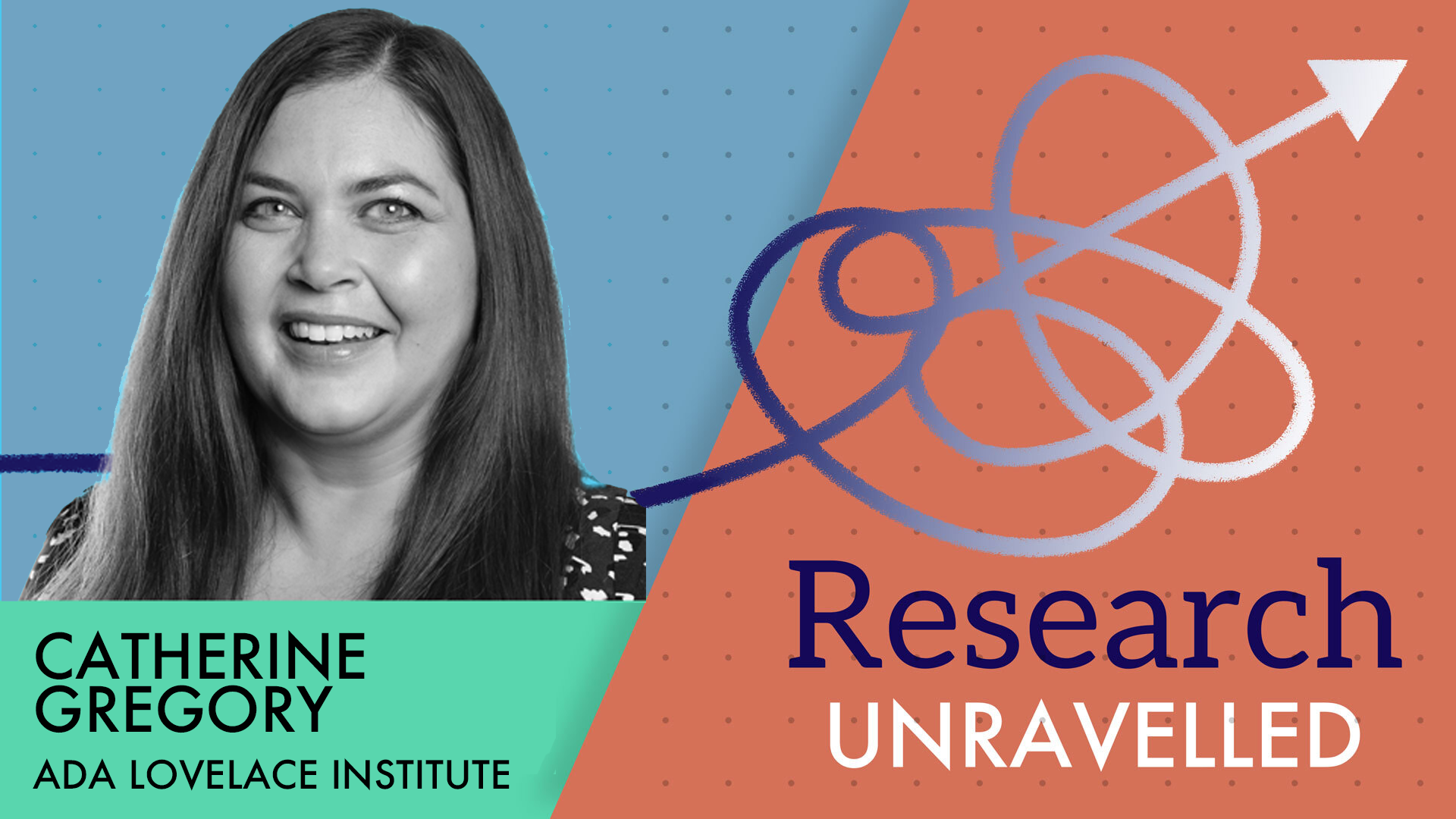"You have to embrace the awkwardness and discomfort. It's messy, right?"
Description
How do you craft consistent communications in a field as rapidly evolving as AI and data? Can we shift the narrative from perceived future existential risk to actual present day harms? What's the best way of making your messages resonate with policy makers?
Join Peter Barker in conversation with Catherine Gregory - Head of Communications and Content at Ada Lovelace Institute, an independent research institute with a mission to ensure that data and AI work for people and society.
Conversation
The below excerpt has been condensed and edited from the original for the sake of brevity.
Peter: What aspects of your work are especially complex?
CG: ‘We can really go back to basics with this and just talk about the definition of AI itself.
A definition of what you work on should seemingly be a very straightforward thing, right? But with AI, it is so rapidly evolving, it's hard to pin down. If we had to define AI a year and a half ago, pre ChatGPT, the definition would have been entirely different from what it is today.
And so I think that complexity, it introduces this tension and discomfort from a comms perspective, because if you think about an elevator pitch, for example, you really want to just have that nailed, have it be evergreen, and leave it alone. But with something like AI and data-driven technologies, it's not that simple and straightforward.
And so we've really had to reckon with this tension and and I think what it really comes down to is the fact that there's not one definition that is going to satisfy every context and satisfy every audience.
Peter: How do you unravel that complexity?
Catherine: ‘It's about acknowledging the limitations of the definitions up front, actually saying that it's a rapidly evolving area, there's not a universally accepted definition and then looking to our evidence base, ensuring that we're approaching the definition from a very Ada perspective, which for us is looking at the interaction between these technologies and people in society.
In a complex and rapidly moving area like AI and data, you have to reevaluate your comms, messaging and definitions periodically. It's not going to be something that's evergreen, it's not going to be something that's static.
That can be uncomfortable for comms teams, but I think you just have to embrace the awkwardness and discomfort. It's messy, right?’
Peter: What’s one piece of advice you’ve been given in your career that you keep coming back to?
CG: For me, that's a really easy question. It is always go back to the strategy when in doubt. Go back to the strategy, go back to the mission - when it comes to making tough decisions, when it comes to crisis communications, just go back to the strategy. What does your organisation stand for? Who are the people that you're talking to? It's just a fundamental thing and it's helped me through lots of tough situations.
Peter: Can you recommend a book, film or podcast that’s inspired you?
CG: ‘My recommendation is a documentary, and it's not exactly about communication but it is the perfect example of using storytelling to illustrate a complex issue.
It’s a documentary called ‘Daughters’ that’s on Netflix in the UK. It zooms in on a father daughter dance that is being held in a prison in Washington D.C. You see interviews with the fathers, you see the daughters outside of prison, living their everyday lives and the struggles that they're encountering.
That is the story that's being told, but it illustrates the systemic problems of racism, of poverty, of the prison industrial complex. And without being heavy handed and talking about these things in an academic way, it shows it through the stories of these actual human beings. It is so powerful and moving. And I think it's a really good comms lesson.’

